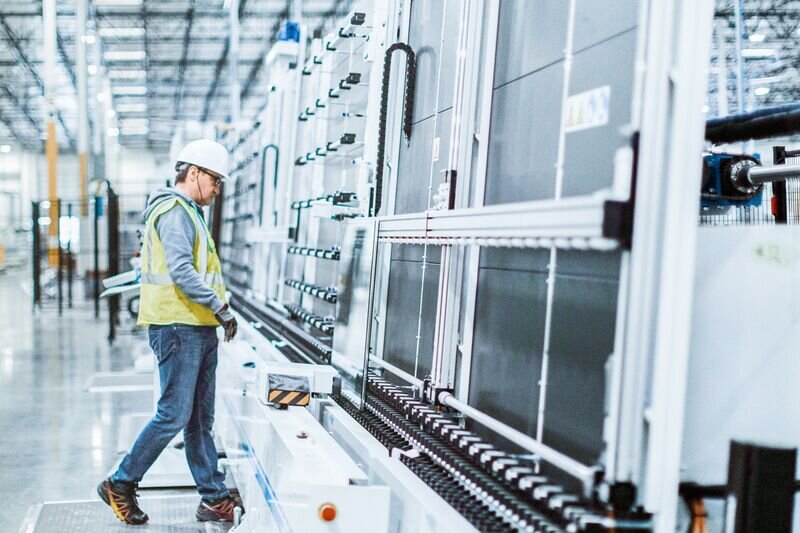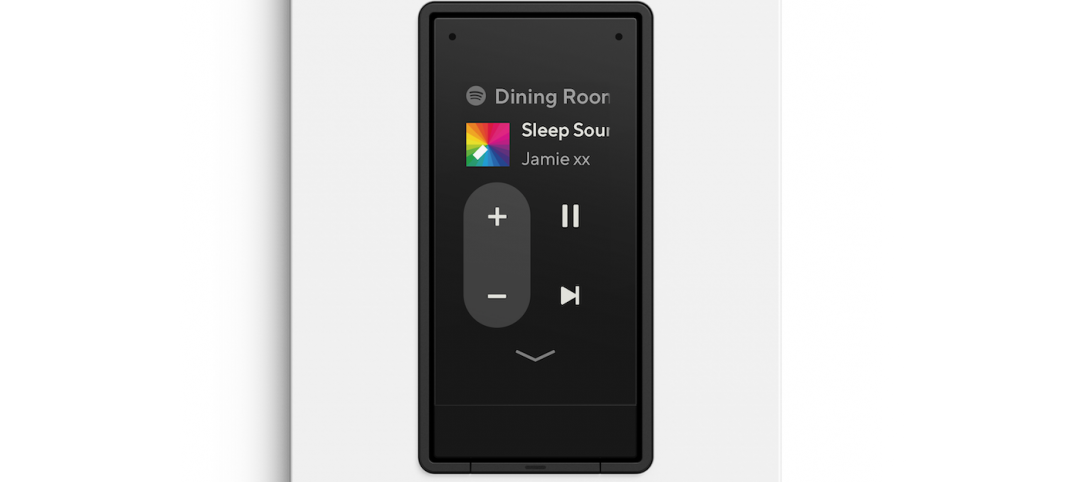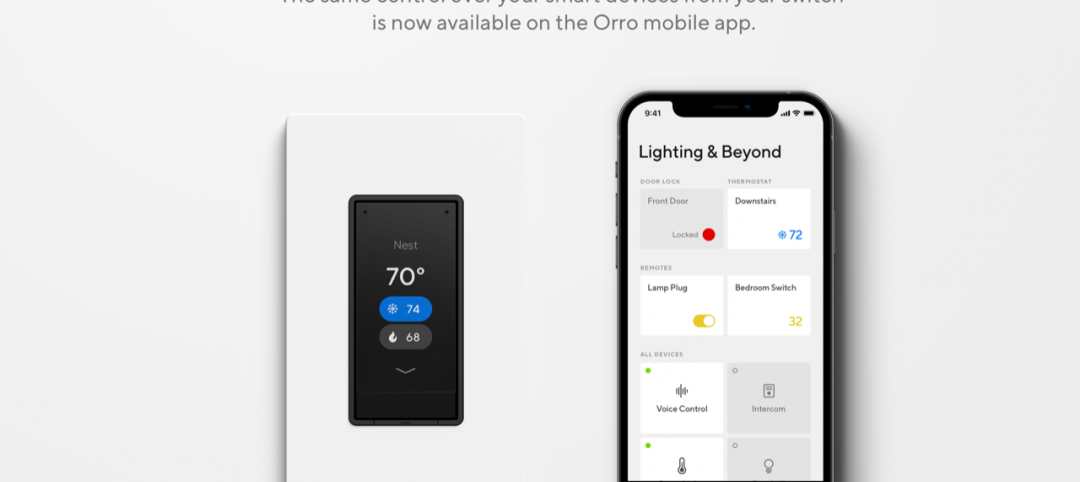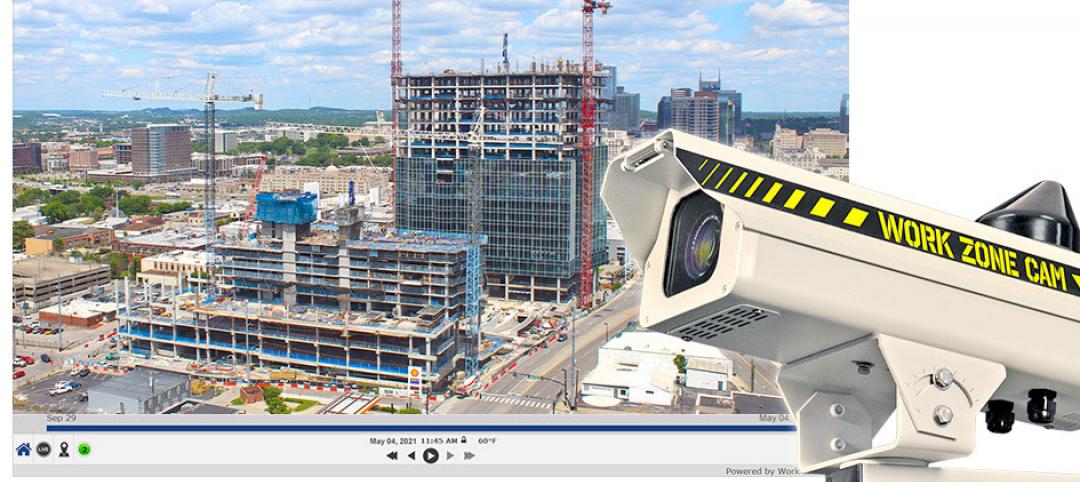The novel coronavirus pandemic has reshaped the construction industry, mostly positively in terms of operational efficiency and worker safety. It has also accelerated the growth—and funding for—construction technology, while creating a hierarchy for how broadly the industry has adopted these tools.
In its latest “State of Construction tech” report, released today, JLL aims to organize the wide range of technology options and measure how the pandemic has impacted their application by AEC firms and the clients on their projects.
Henry D’Esposito, JLL’s Construction Research Senior Analyst and the report’s author, asserts that, due to the pandemic, “three years of construction technology growth and adoption have been compressed into the past nine months.” Venture capital has continued to flow to startups, with funding levels about on par with the average for the past five years.
Construction tech kept jobsites open and projects running. It also allowed AEC firms whose employees were forced to work remotely to maintain their workflows. According to a recent U.S. Chamber of Commerce survey, 67% of the construction firms polled allowed employees to work from home. However, JLL notes that smaller firms were less likely to have systems in place.
Construction firms in general with fewer discretionary dollars were likelier to select proven tech solutions rather than take a risk on a less-mature startup.
WEARABLES IMPROVE WORKER SAFETY
ConTech enabled onsite execution in two ways, JLL observes: First, by creating opportunities to have fewer people on a jobsite. Second, by keeping anyone who is essential to being onsite as safe as possible.
“Technology solutions that have expanded this year include wearables and monitoring devices to ensure workers stay socially distanced and to allow contact tracing if any issues arise; and planning tools to enable optimal efficiency in staging and scheduling to ensure that teams stay separated,” says JLL.
Wearables were among the ConTech tools for which the impact of the pandemic on their usage was deemed “high” by JLL.
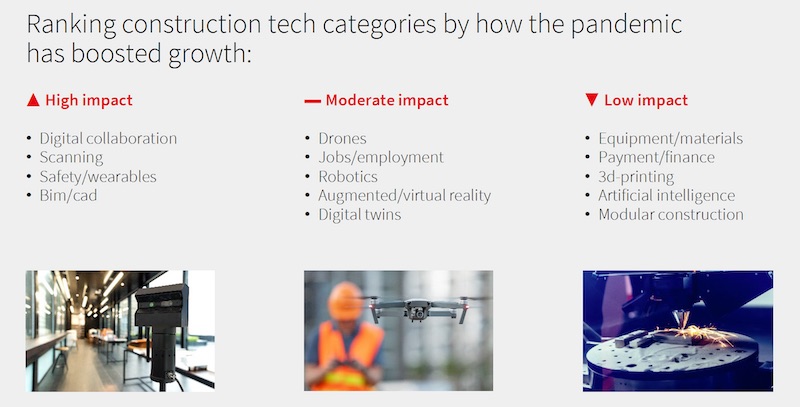
JLL has organized ConTech by its relative impact on construction, and whether the coronavirus affected that impact. Image: JLL
The report identifies the ConTech hierarchy into three groups:
•Foundational technologies that have become standard fare for AEC firms. These include BIM and CAD, digital twins, Artificial Intelligence (AI), and digital collaboration;
•Primary impact technologies that are gaining acceptance, such as scanning, drones, and modular construction; and
•Secondary impact technologies that are still in their early stages of adoption. Wearables falls into this category, as do 3D printing, robotics, AR/VR, and tools related to payments/finance, equipment/materials, and jobs/employment.
JLL believes that BIM and CAD, scanning, and digital collaboration each got a “pandemic boost,” whereas AI may have lost some steam. Scanning, for example, gained importance during the health crisis “as a way to replace additional eyes onsite, and as a substitute for in-person meetings and walkthroughs.” Prior to the pandemic, scanning was a more efficient and comprehensive way to collect data. But under regulations where a limited number of staff can be onsite at any time, “interior scanning has often become a necessity to ensure that all members of a project teams are on the same page, even if they cannot be onsite.”
ROBOTS AND 3D PRINTERS STILL HAVE A WAYS TO GO FOR INDUSTRY ACCEPTANCE
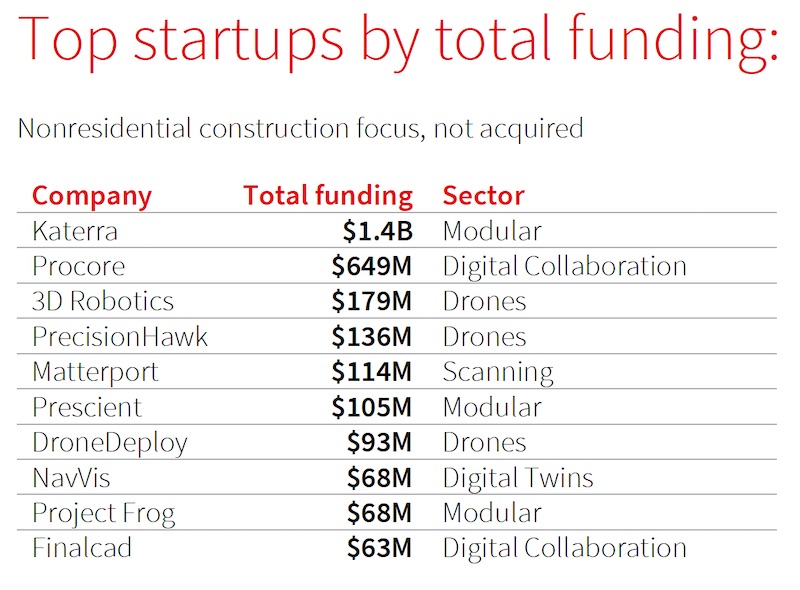
Venture capital funding for ConTech during 2020 was in line with levels over the past five years. Image: JLL
Drones, says JLL, got a moderate boost from the pandemic because “of their ability to do the work of multiple people, and to do so in a way that keeps people socially distanced.”
And while many AEC firms claim to be embracing modular construction for quicker project delivery, JLL finds that the impact of the pandemic hasn’t been much of a factor on leading more firms to this method. “On the positive side, modular manufacturing can be done in a controlled factory setting, with the ability for extensive preplanning to maintain social distancing without the unknowns of an active jobsite. On the negative side, modular construction remains an economically high-risk endeavor.”
The pandemic also has had mixed impact on other ConTech tools. Its effect on the adoption of 3D printing, for example, was low, says JLL, which predicts that the future of 3D printing is brighter for single-family home construction or certain military applications than for nonresidential construction.
JLL is a bit more sanguine about robotics, which got a moderate boost from the pandemic. “With the addition of AI, this sector is developing for more advanced tasks, including fully automated excavation or interior chalk lining.” Nevertheless, JLL expects robots to be used on a limited basis for pilot projects for at least the next few years.
Augmented and virtual reality are still in their early development stages, and both have the potential to become standard on construction projects. But, JLL cautions, “they will only work on projects with high adoption of other forms of tech that would be required for integration.”
Related Stories
AEC Tech | Jun 30, 2021
Orro Launches New Integration with Sonos, Providing Seamless In-Wall Control for Sonos Speakers
With the new integration, customers can use the dynamic display on Orro’s smart light switches to control their favorite audio content on their Sonos speakers.
AEC Tech | Jun 9, 2021
Orro Announces Unified Smart Home App
Orro app now provides control of other smart home devices from leading professional and consumer device manufacturers.
AEC Tech | Jun 8, 2021
FARO Expands Digital Twin Product Suite - Acquires HoloBuilder Inc.
FARO Technologies, a global leader of 3D measurement, imaging, and realization solutions for the 3D Metrology, AEC (Architecture, Engineering & Construction), and Public Safety Analytics markets, today announced the acquisition of HoloBuilder, Inc.
AEC Tech | May 27, 2021
New Work Zone Cam Pro Delivers 33% More Detail for Time-Lapse
Work Zone Cam, a leading provider of professional jobsite construction camera services, premiered its latest camera, which increases image resolution from 18 to 24 megapixels. The additional image detail helps track construction progress more accurately and results in higher resolution time-lapses for construction documentation.
Digital Twin | May 24, 2021
Digital twin’s value propositions for the built environment, explained
Ernst & Young’s white paper makes its cases for the technology’s myriad benefits.
AEC Tech | Apr 15, 2021
3 startups making their mark in 2021
Meet a trio of AEC tech firms that are making advances in the COVID-19 era.
Adaptive Reuse | Apr 15, 2021
The Weekly Show, Apr 15, 2021: The ins and outs of adaptive reuse, and sensors for real-time construction monitoring
This week on The Weekly show, BD+C editors speak with AEC industry leaders from PBDW Architects and Wohlsen Construction about what makes adaptive reuse projects successful, and sensors for real-time monitoring of concrete construction.
AEC Tech | Apr 8, 2021
The Weekly Show, April 8, 2021: SPOT the autonomous robot, and Woods Bagot's in-house 'futurist'
This week on The Weekly show, BD+C editors speak with AEC industry leaders from Procon Consulting, Virginia Tech, and Woods Bagot about SPOT, the autonomous robot for construction progress monitoring applications, and how Woods Bagot's new "futurist" is promoting innovation at the international design firm.
Coronavirus | Mar 11, 2021
The Weekly show, March 11, 2021: 5 building products for COVID-related conditions, and AI for MEP design
This week on The Weekly show, BD+C editors speak with AEC industry leaders about building products and systems that support COVID-related conditions, and an AI tool that automates the design of MEP systems.
AEC Tech | Mar 4, 2021
The Weekly show, March 4, 2021: Bringing AI to the masses, and Central Station Memphis hotel
This week on The Weekly show, BD+C editors speak with AEC industry leaders about the award-winning Central Station Memphis hotel reconstruction project, and how Autodesk aims to bring generative design and AI tools to the AEC masses.


